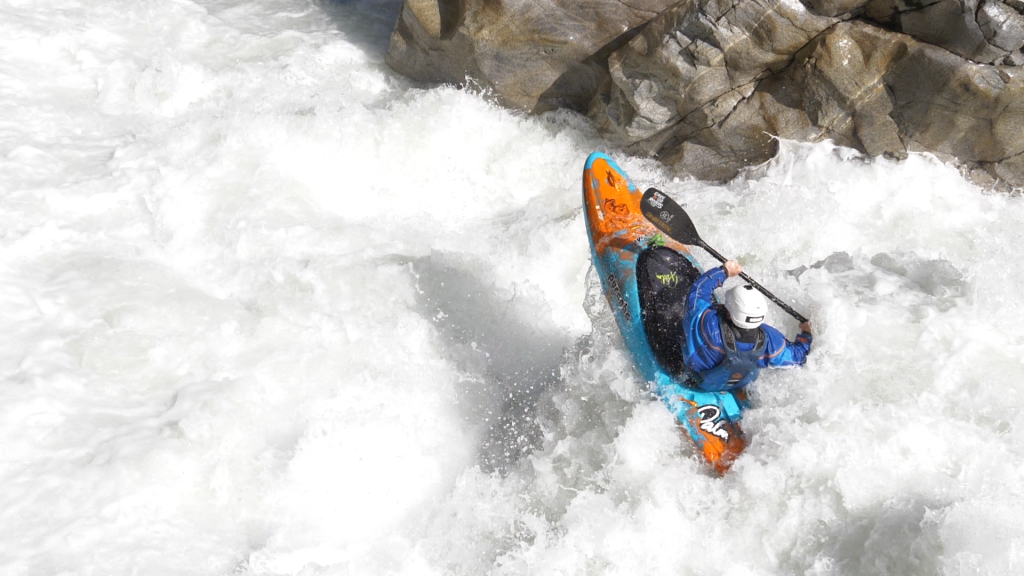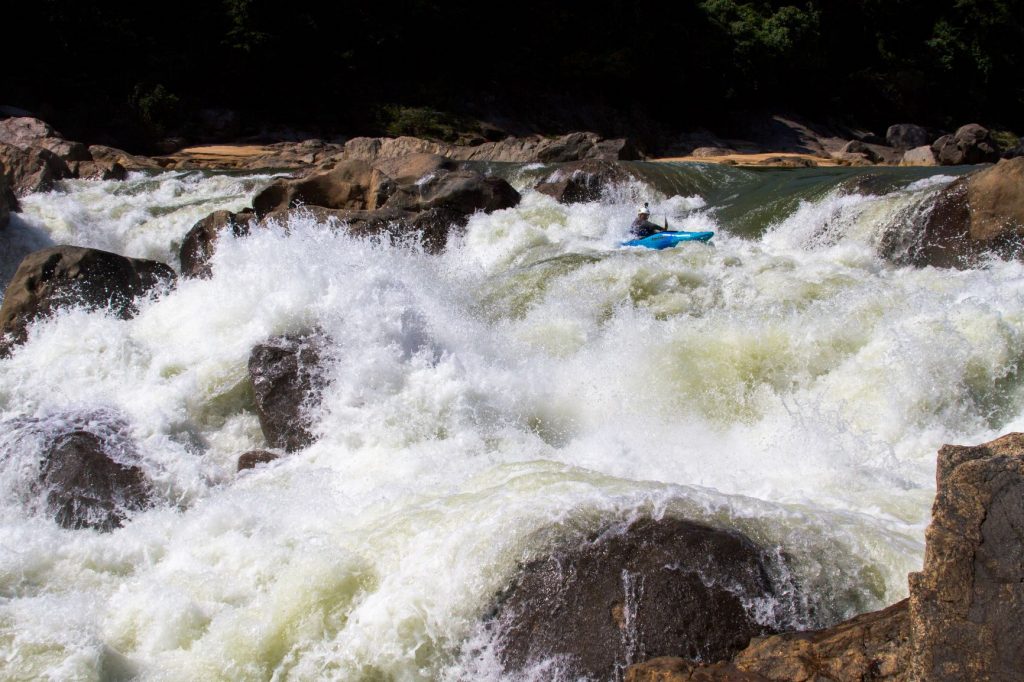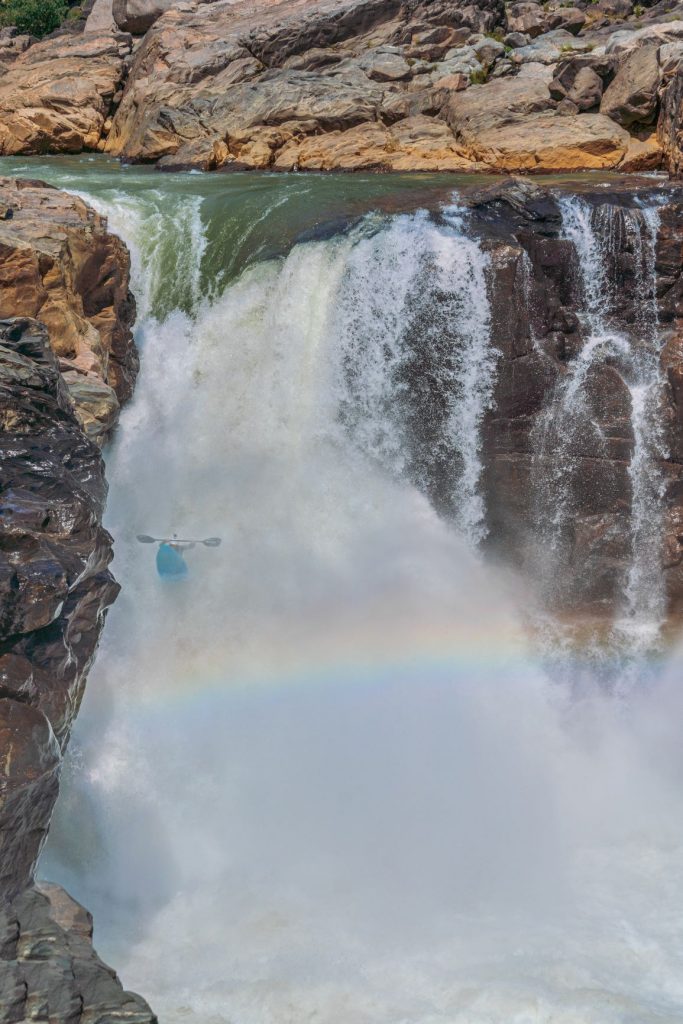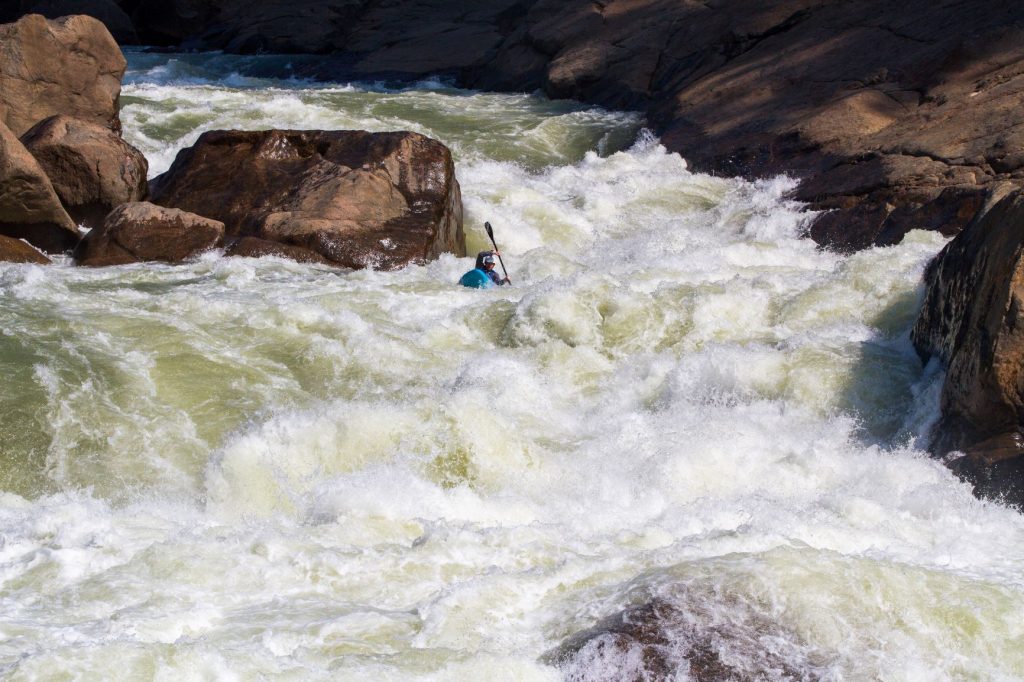I spent a good while looking for a word or phrase that best describes purposely using something for an intention that it was not created for and being pleasantly surprised, but couldn’t find one. This means that the creation of that word or phrase is up for grabs, and I would like to stake my claim to it with “Expedition Rippering”.

I fell in love with the Ripper from the first day I used one of the prototypes; early on in the development process, it was intended as a kayak to make your local run more fun and teach you some things about body position and edging. We then found that it works exceedingly well on hard whitewater if you are willing to work to keep it under control and deal with the occasional backloop.
The skill increase and the progression from using the Ripper as my primary kayak has been exponential, and I am generally astounded at how well it performs, even in situations that it was not fully intended for. I feel I have used it across almost all the ranges of kayaking out there, except one. Multi-day kayaking.
Arriving in India, I did one of the day runs first to feel out the type of whitewater we would be on, and was immediately impressed with the power in the water. A loaded Ripper on this type of whitewater was going to be sporty, to say the least.

Warmed up on the day run, we headed out to the Kinchi river; on the way we stopped off to purchase our food for the multi-days. I genuinely didn’t look for food I liked or that would typically be good to have on a multi-day, I looked for the lightest sources of calories possible and walked away with several packs of biscuits.
My overnight gear was pretty light, sleeping bag and bivvy bag and some dry clothes for at camp. No roll mat on account of my sleeping habits and my tendency to have really vivid dreams, move around a lot and invariably end up rolling off the mat and sleeping in the dirt anyway. My packs of biscuits were also relatively light. The camera bag was what piled the weight down on the kayak as I had a drone, DSLR, spare batteries, a battery pack for the batteries, and some big lenses. Still, if you are about to do something questionable, you might as well get it on camera.

At the levels we had, the first big rapid on the Kinshi river arrives in the form of a boulder pile on the left. A pretty messy rapid with a tight left turn to make in order to not get smashed into the rocks. I had been hoping for more of a warm-up, but whatever, I saw my line and felt good about it. Dropping in, the loaded Ripper handled pretty well and I was able to keep the kayak flat and mostly in control, it behaved like a normally loaded kayak – slower than usual and harder to make quick adjustments, but all the characteristics of the kayak remain the same.
We continued down the river, enjoying some awesome Class 4 rapids along the way. I was pleasantly surprised that the Ripper, even with a good chunk of weight in it, still kickflipped relatively well.

Reaching the biggest piece of whitewater on the run, a massive volume 50fter, I really wished that I had my 9R II with me. I could see my line, but I could also see that there was enormous power in the water at the bottom of the waterfall, and for this reason, I adjusted my line mentally and decided to try and bring the nose up and try and stay on top of the water.

I paddled up to the edge and flew off the lip, got forwards expecting a big hit but instead felt nothing until the curtain of falling water landed on top of me… and then I felt myself going really deep and getting ripped out of my kayak. I got a double hold down, with just a small breath in between the two, but my mind was firmly on the welfare of my kayak. This river is exceedingly exposed and hiking out would likely be a nightmarish week struggling through the Jungle.
I got to the side and could see that the kayak was about to go over the next 20ft waterfall. I commandeered my mate, Frazer’s kayak and took off sprinting down the next drop. I got to the next rapid and couldn’t see my Ripper, but could see that the next rapid ended in a huge hole. “Eurgh, I can’t swim again and lose another kayak… this one isn’t even mine!”. I peeled out and took off down the bank only to see that Gareth Lake had gotten ahead of me and was well on his way to getting his hands on my kayak, which had saved itself and eddied out in a pocket at the bottom of the rapid and somehow hadn’t been destroyed on its solo trip full of water down the river.
I thanked Gareth, the lads, and the river gods, got back in my kayak, and we headed downstream. Fortunately, I had the forward-thinking to assume that a swim could happen at the bottom of that waterfall and had taken all of my drybags out of my kayak before sending it. Which meant I still had all of my gear with me. Stoked!

The next day was chock full of rapids, some big, some small, some hard and some ea- well, actually, in a loaded Ripper there were very few “easy” rapids, but I did have a great time on all of them.
A part of using the Ripper on hard whitewater is accepting that there will be times were you are vertical and the kayak can surprise you, and I certainly had my fair share of backloops and rolls. However, with that comes awesome potential to use such a manoeuvrable kayak on this grade of whitewater and have the potential to move down the river differently, find new lines, and be left grinning ear to ear on the water.
In summary, I give using a Ripper as a multi-day kayak an 8/10.
8 times out of ten, it’s great.
1 time out of ten, it’s scary.
…and the other 1 time out of 10, I was swimming.
Please note that this blog is largely sarcastic, and there are a plethora of better Pyranha kayaks to take on multi-days… Make good choices, and enjoy your time on the water!
Bren
Watch the video of our trip here:



